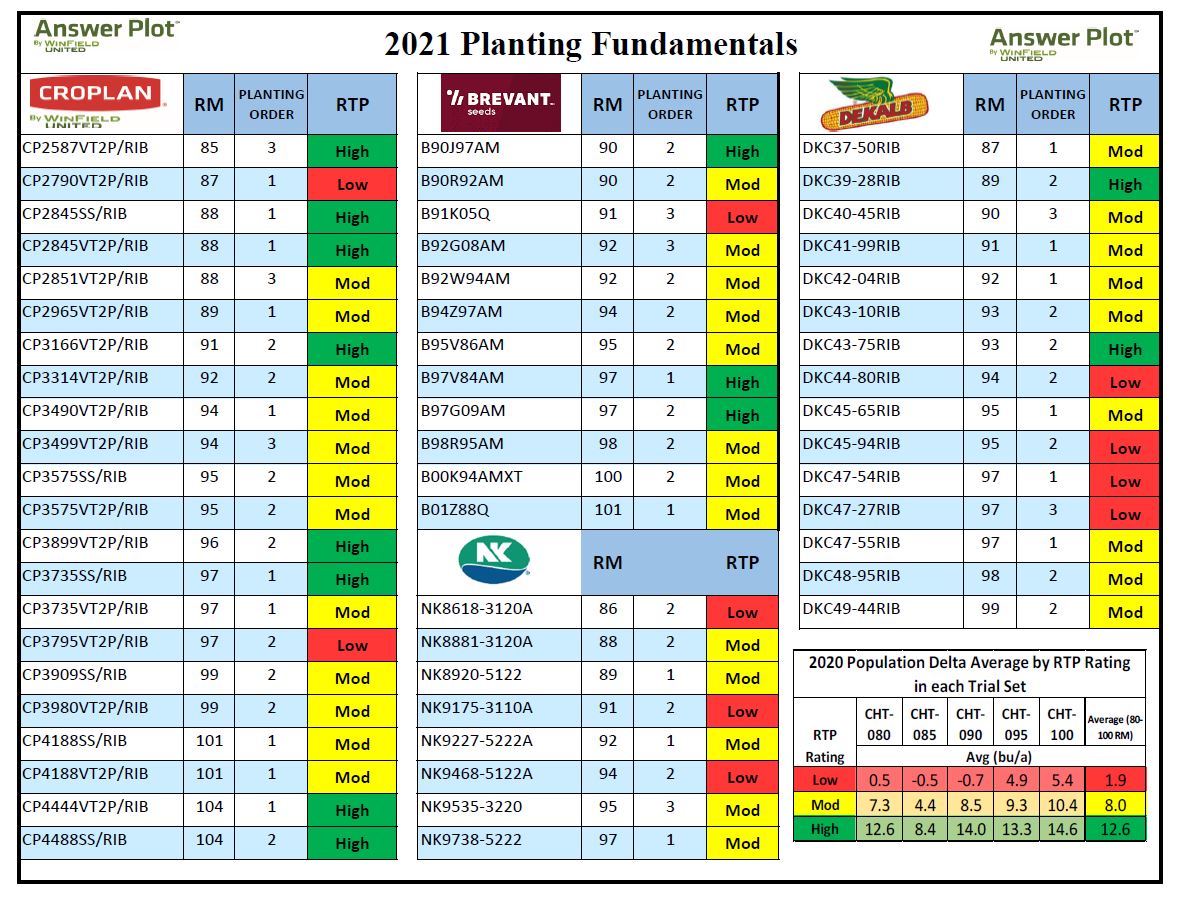Planting Fundamentals
Apr 16, 2021

PLANT STRESS – What impact does it have on plant density?
Genetics – Every corn hybrid is truly unique in its ability to handle plant density. At any given site we consistently see a 40-bushel loss or gain based solely on the planting population. One misnomer is that you cannot lose yield by planting at too high of a density. A local example of these impacts would be with Croplan 2845VT2P which gained 16.5 bushels in 2020 Answer plot testing due to increased density. Adversely, Croplan 2965VT2P lost 12.6 bushels at the higher plant density.
Water – Too much water and not enough water have a similar impact on a hybrids ability to handle population. In both cases populations should be reduced. Well drained soils with adequate water holding capacity allow for populations to be maximized.
Nutrient – Nitrogen is typically the focus for this category. Overall fertility can impact the ability of a hybrid to handle density. Some hybrids are more forgiving than others. In general, population should be adjusted based yield environment which typically relates back to base fertility and nitrogen management.
Rotation – In 2020, the corn on corn penalty was over 20 bushels and nearly two points of grain moisture. Another myth is that corn on corn requires higher populations. This is not the case. Corn on corn creates stress and coupled with high plant densities can create yield loss. In 2020 rotated acres had a 11+ bushel increase at higher populations. Corn on corn saw an 8-bushel advantage. Corn on corn where nitrogen was limiting had no yield advantage to increased populations. Keeping populations somewhat conservative on high residue corn acres can reduce stress and maximize yield.
RESPONSE TO POPULATION SCORES – what do they really mean? Response to Population scores use multi-year data to determine a specific hybrids ability to handle density stress. These scores compare hybrids in the same environment with adequate fertility at a population of 30,000 vs. 37,500.
High – High responders to population used to always receive the tagline “fixed”. Over time we have learned that high responders to population can provide some flexibility to a grower. Yes, these products maximize yield at higher populations. But they also provide very little risk due to density stress. Think of these products as having another yield “gear” that can add bushels if the growing season allows.
Medium – Medium responders are the most farmer friendly category. These hybrids can maximize yield through a larger range of populations. These hybrids are typically the largest volume due to the added
“peace of mind” they can provide.
Low – Low responders are the most unique and have the largest risk vs. reward. Low responders can and will lose yield due to density stress. This DOES NOT mean they are lower yielding. 26,000 to 30,000 planting populations are common for these products. Never push them over 32,000.
Michael Kragenbring, Winfield United Seed District Sales Manager
